
Experiment with mixed results
I recently did some research to equip myself with an HF microphone system and noticed the increasingly frequent use by manufacturers of internal batteries. While high-end systems still have interchangeable AA-type batteries, allowing continuous operation by periodically swaping the batteries; most entry-level systems, like the Rode Wireless Pro, or Hollyland Lark Max have small built-in Li-ion batteries, requiring charging time once they have been emptied. Would it be possible to overcome these limitations by powering these devices with AA batteries?
As always, a full list of the articles in this blog can be found HERE.
The idea would be to find a small external enclosure, with reduced dimensions so that it can be slipped into a pants pocket and power an HF transmitter by accepting AA batteries. I searched the internet for possible solutions and here is the result of my findings:
No Name 4 AA batteries enclosure
I quickly realized that it would take at least 4 batteries to properly power the devices at 5V without a converter, an AA battery producing only 1.5V in the alkaline or lithium version, and 1.2V in the case of NiMH rechargeable batteries. .
Many options on the market are not confidence inspiring, like this first pick: a no-name case that takes 4 AA batteries and has a USB output, all for about $5.
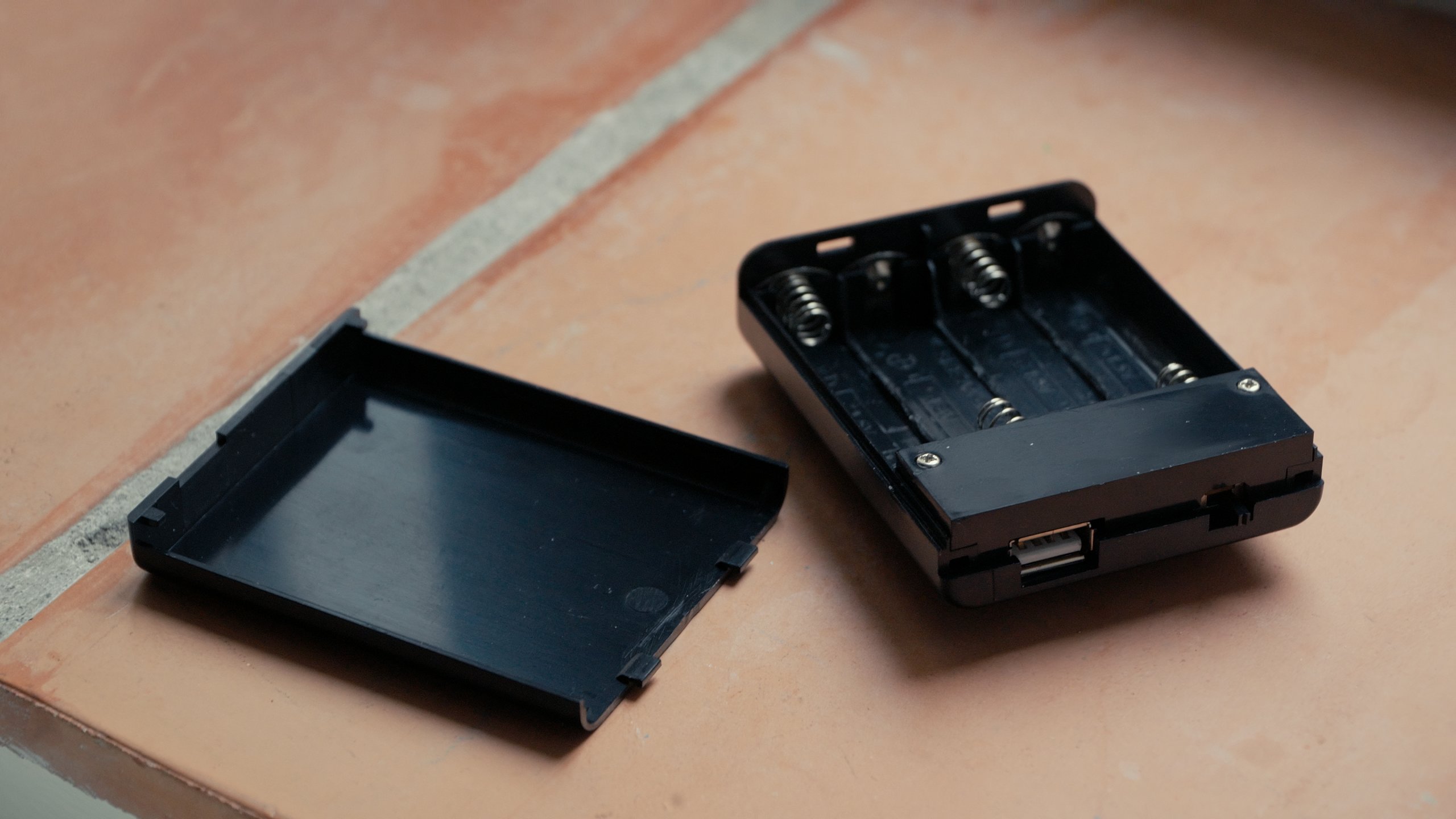
If the case is relatively compact, the electronics are extremely basic because they are incapable of charging any device, even those with a small battery (<500mah at 5V). My hypothesis is the absence of a circuit boosting the voltage to the level necessary to initiate the charging cycle (around 8V for 5V batteries). The box will however be able to power devices without internal batteries, like a Zoom H5 for example.
XTAR BC4 Chargeur/Banque d’alimentation
Presentation
I continued looking for a case with similar specifications but with more advanced functionnalities, and came across the BC4 charger/power bank from Xtar, selling for around €20.
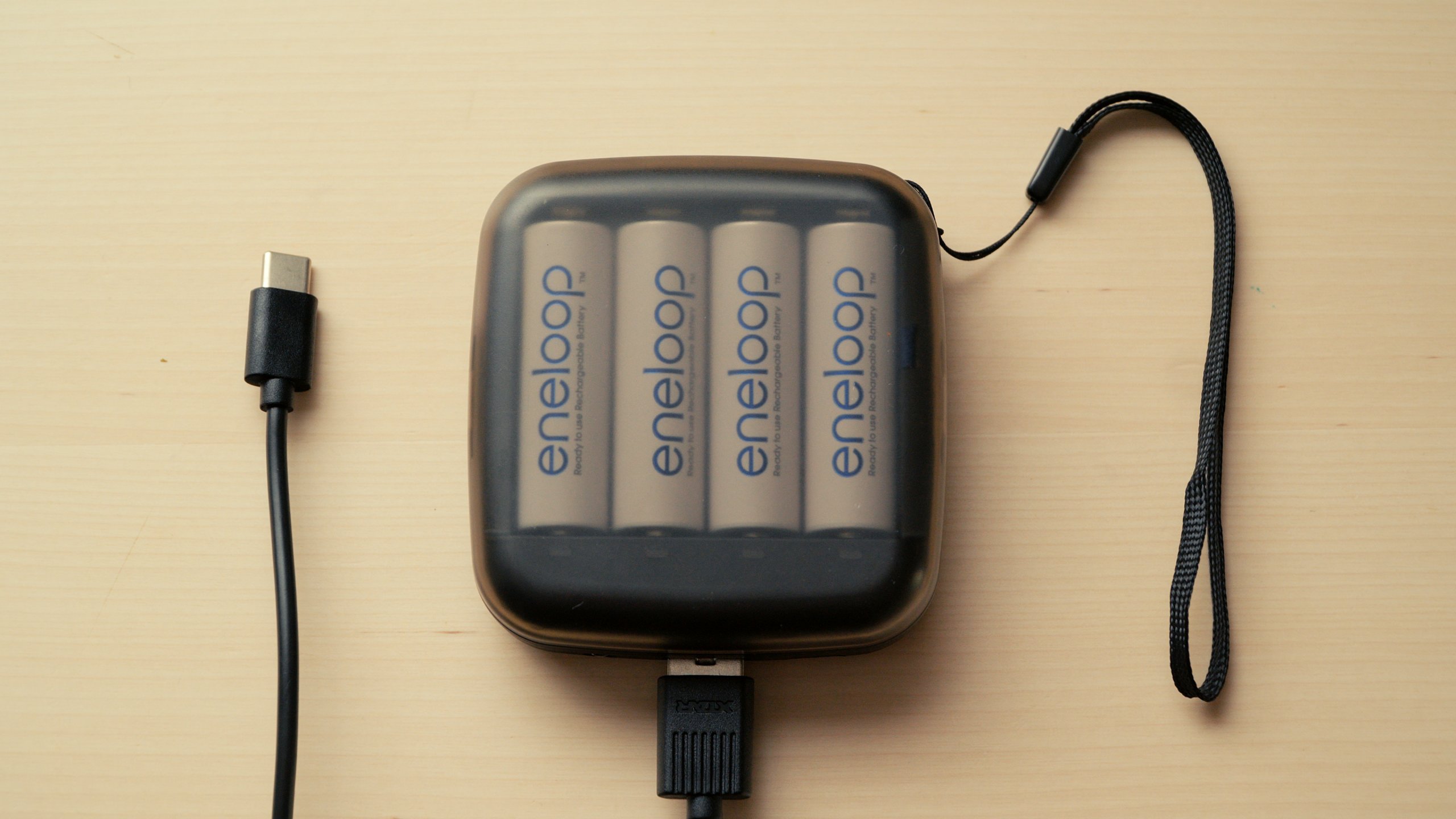
It is basically a charger for 4 AA or AAA batteries (NiMH or rechargeable Lithium) but has a power bank function to power any device thanks to the USB-A port. A small LED can be used as makeshift lighting but I doubt the real usefulness of this function. A small strap provides a convenient attachment point to the case. A USB-A to USB-C cable is provided.
The transparent shell is securely clipped and prevents the batteries from coming out of their housing. 4 LEDs display the charge status of each battery individually. Red indicates that charging is in progress, green that the accumulator is full. In power bank mode, the 4 LEDs indicate the remaining battery level: 4 LEDs for >75%, 3 for >50%, 2 for >25% and 1 for <25%.
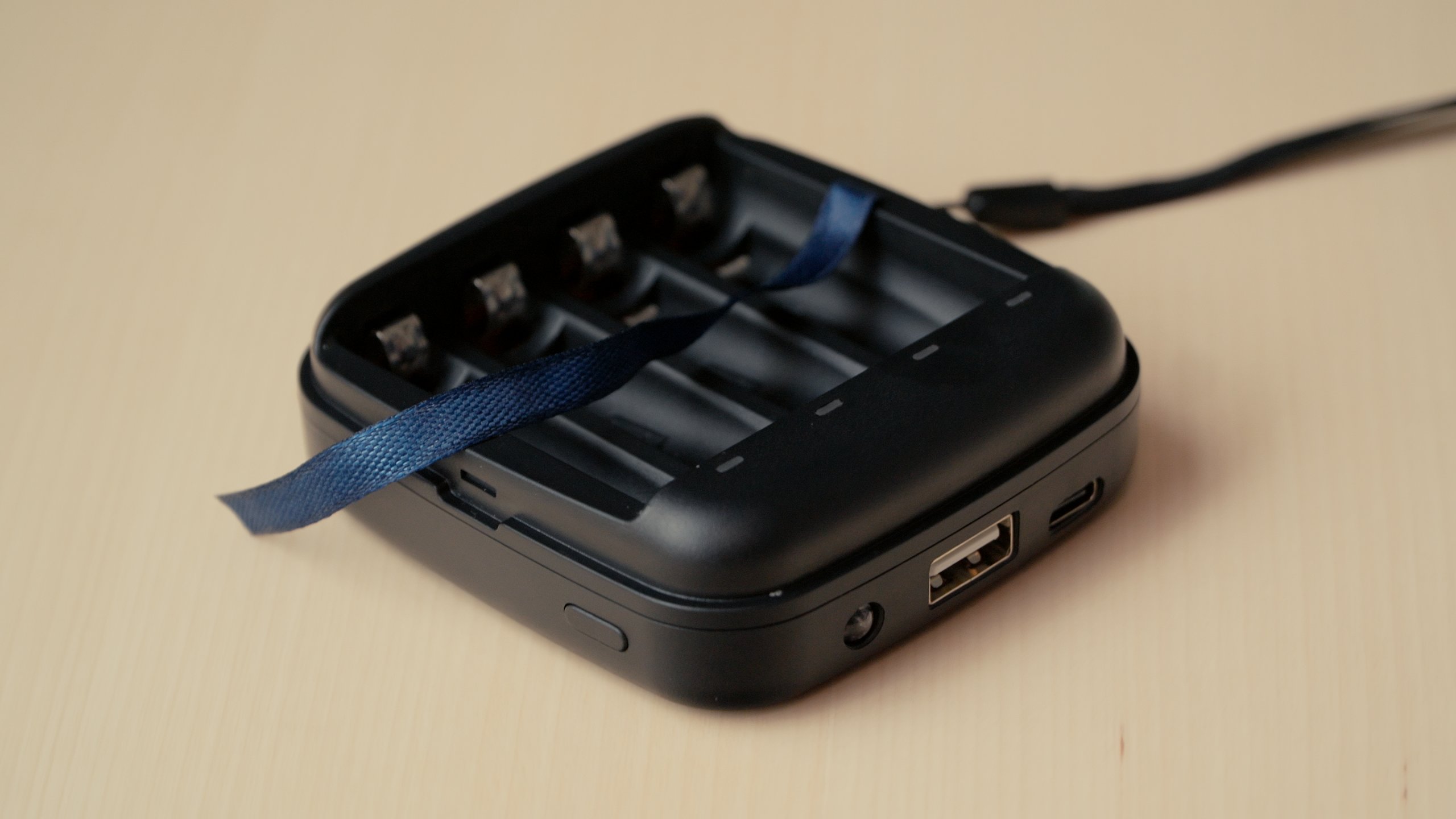
Fast charging anomalous behavior
The electronics are more advanced here as the case can charge all the 5v USB devices that I have been able to test. However, I noticed a very particular behavior when trying to charge a smartphone.
A more appropriate measure of battery capacity is in Watt-hours (Wh), obtained simply by multiplying the Ampere-hour (Ah) value by the voltage. So my smartphone battery has 17.4 Wh capacity.
An Eneloop AA battery as illustrated, provides 2000 mAh at 1.2V, so 2400Wh of capacity. 4 AA batteries should provide almost 10Wh, maybe 8.5 to 9Wh counting losses. But used to charge the smartphone, they are only capable of charging around 25% of the battery, or less than 5Wh. Almost 50% of the capacity is lost! A first hypothesis was that the charging intensity was too high and greatly reduced the capacity of the batteries. I measured the battery voltage while the smartphone was charging and there was indeed a huge drop in voltage, from 1.25V without charging to 1V with the smartphone plugged in. Excessive amperage, in addition to heat loss (the case becomes very hot to the touch) and charge and conversion losses, reduces the capacity of the accumulators and triggers the end of charge earlier. The instructions indicate that the USB output is only supposed to provide 1A at 5V, but when charging the smartphone, the batteries are drained in only 45mn. A quick calculation shows that the actual load would be more like 2 to 3A. The battery status indicator also goes very quickly from 100% to 75% to 25% remaining power in less than a minute, which corroborates the huge voltage drop observed. It is possible that the smartphone may attempt to force the power bank into fast charging mode, bypassing current limits and prematurely depleting the AA batteries.
I then tested connecting a 55Wh Li-ion power bank (15,000mah at 3.7V) and it was charged well, without observing any particular drop in voltage or heating of the case. So I won’t recommend trying to charge devices that have a fast charging protocol.
The importance of testing equipment in advance
In the case of powering an HF transmitter, the power bank will charge it without problem and continues to power it until the batteries are empty. At first I thought that the BC4 would turn off automatically if the charge was too low, but it was in fact the transmitter of a Rode Wireless Pro that did not support continuous charging. Once the battery is full, the transmitter will cut off the power whether it is a standard power bank or the BC4, making it impossible to keep it charged continuously!
It is therefore better to test your equipment and especially the different combinations to ensure that there are no strange behaviors before discovering them one day on set.
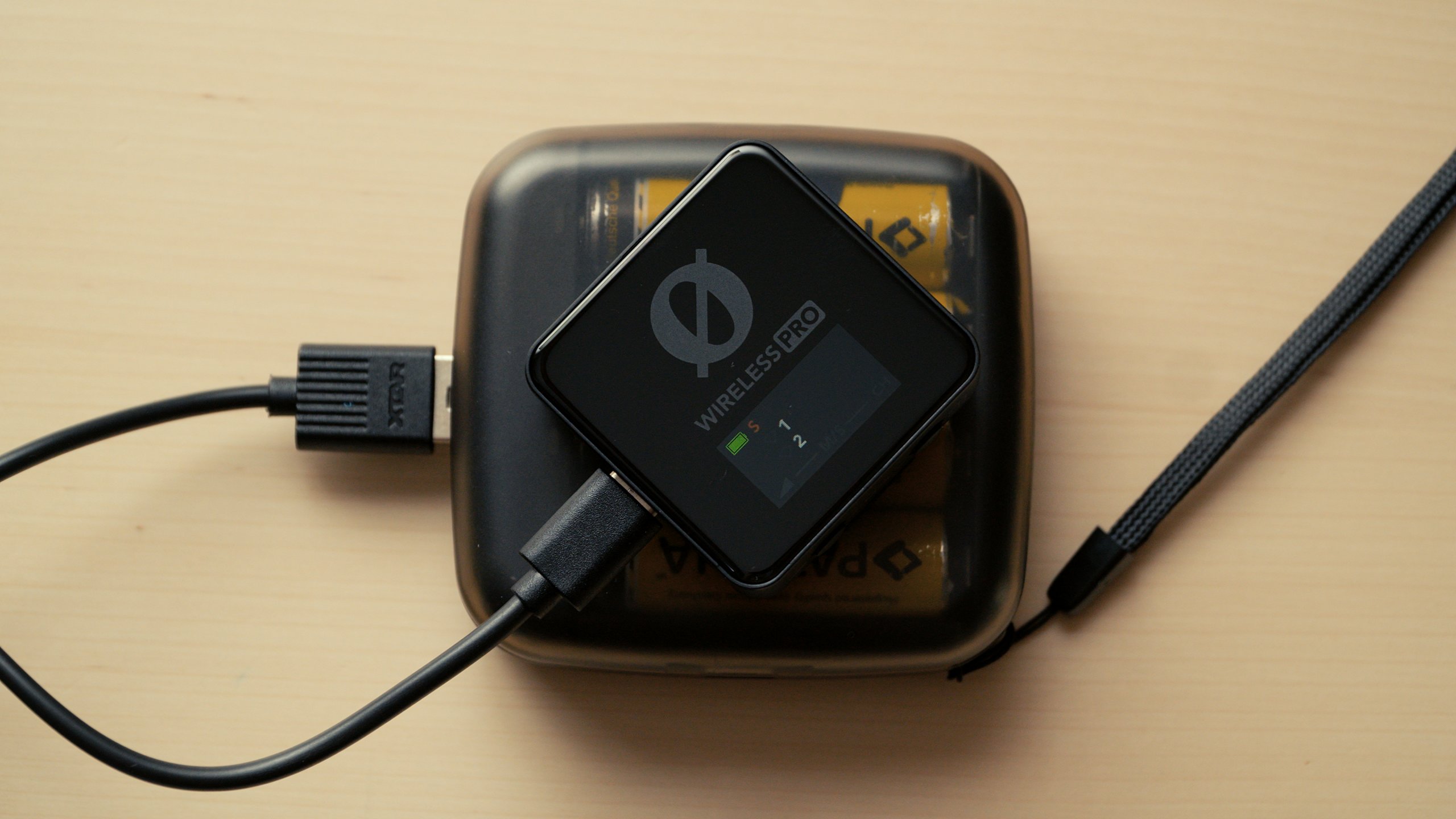
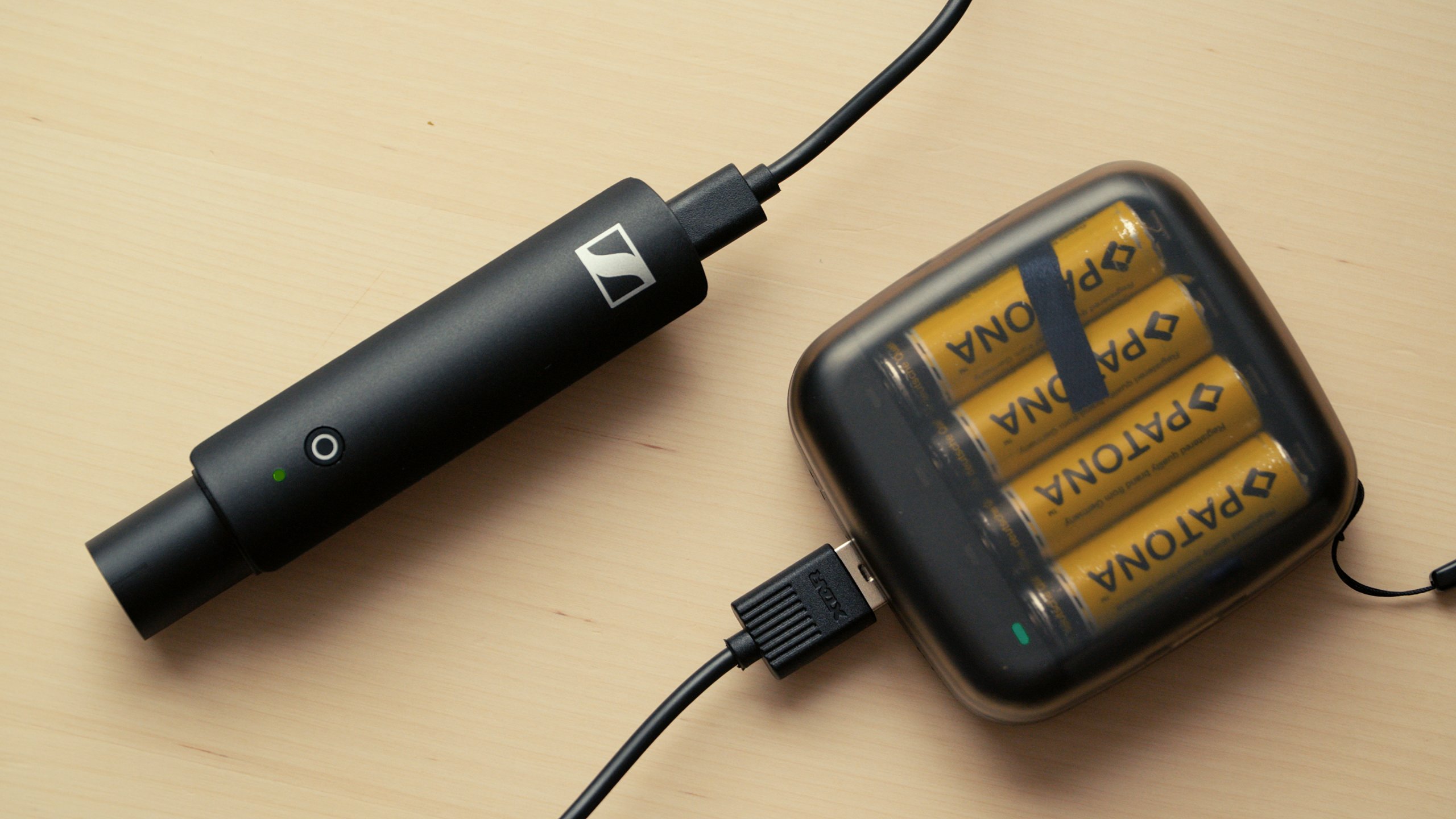
Conclusion
Despite some strange quick charge behaviour, the BC4 box can prove useful by increasing the autonomy of small electronic devices. It is a plug and play solution, as it can be used as a standard power bank, by simply charging it with a USB-C cable before plugging it into the device you wish to charge, but still allowing you to swap the batteries to add an additionnel 8Wh of autonomy in an instant. It can be a good emergency option if access to mains power is complicated and AA batteries can be found everywhere.
However, when comparing the Anker 321 19Wh Li-ion power banks and the BC4 charger, we realize that the energy density of the Anker bank is 2 times greater for a 33% smaller volume! (96 x 45 x 23 mm for the Anker, compared to 78 x 76 x 26 mm for the Xtar).
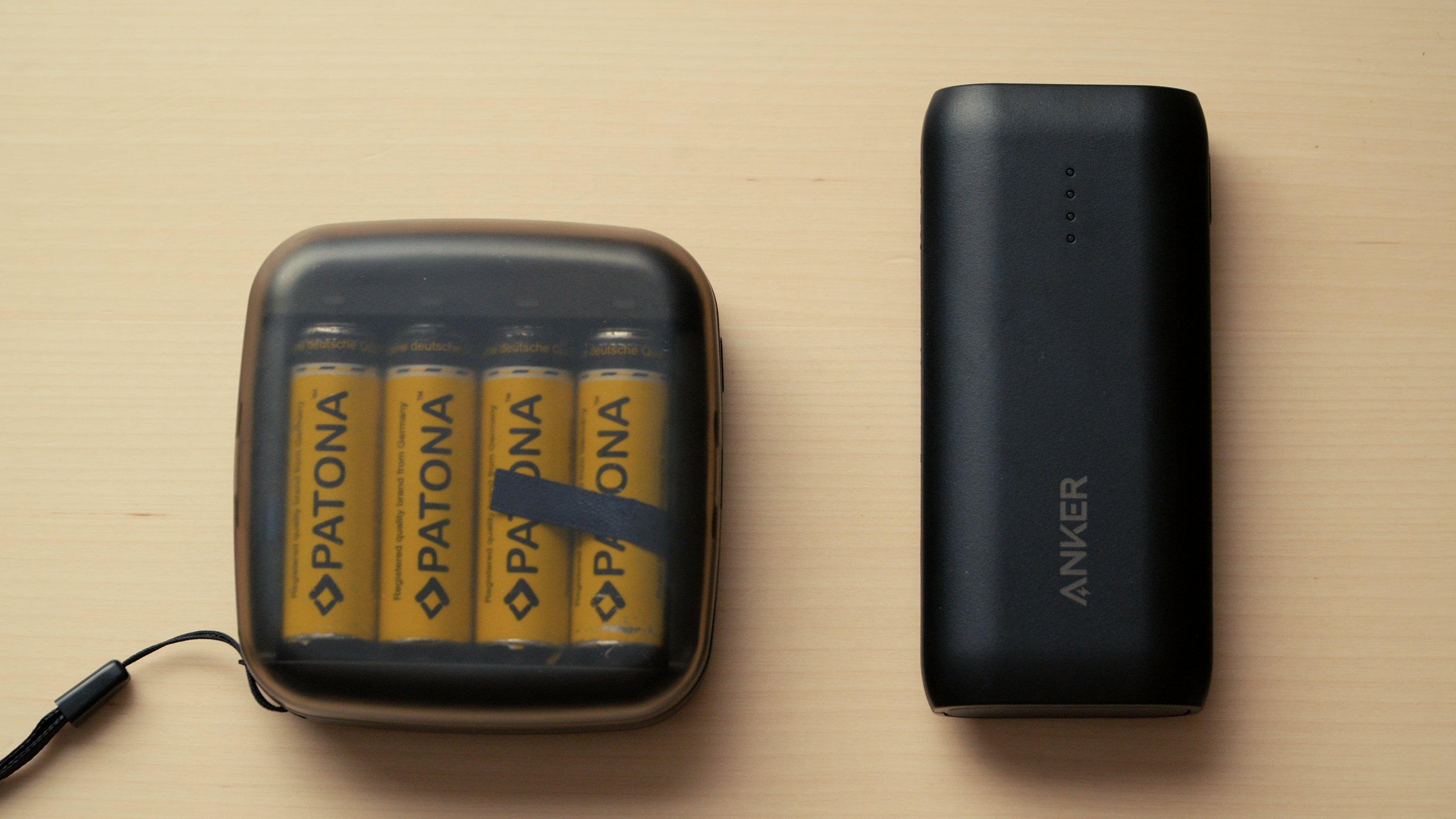
So it is possible to charge internal batteries with AA batteries, but this is not the most efficient alternative either. On the one hand, old, damaged or discharged batteries can be easily replaced, potentially generating less electronic waste, but at the loss of compactness and energy density compared to an integrated Li-ion power bank.
